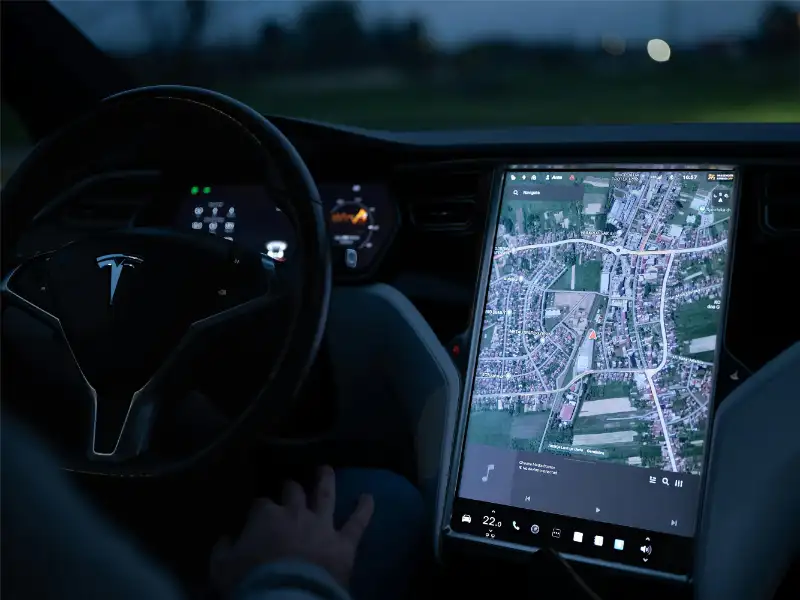- Technology has been a key driver of the growth and advancement of the EV market. Battery technology, charging infrastructure, connected features, lightweight materials, electric powertrains, software, and data analytics have all contributed to making EVs more practical, efficient, and appealing to consumers.
- Government policies significantly impact the EV market by influencing consumer demand, industry development, and infrastructure investment.
- Consumer awareness of environmental issues significantly impacts the EV market by driving demand for cleaner, more sustainable transportation options.
OUR TAKE
EV market is growing at an impressive rate, with sales more than doubling in just a couple of years and significant investments being made across the industry. This rapid growth is expected to continue as technology improves, costs decrease, and supportive policies further incentivise adoption.
–Miurio, BWT reporter
The electric vehicle (EV) market is growing rapidly, driven by technological advancements, supportive government policies, and increasing consumer awareness of environmental issues.
Technological pushing
Technology has been a key driver of the growth and advancement of the EV market. Battery technology, charging infrastructure, connected features, lightweight materials, electric powertrains, software, and data analytics have all contributed to making EVs more practical, efficient, and appealing to consumers. Continued technological progress will further accelerate the adoption of EVs and drive their future development.
Innovations in battery technology have enhanced energy density, charging speed, and overall performance, extending range and reducing charging times while lowering costs. Improved charging infrastructure, including fast-charging stations and smart grid technologies, has made long-distance travel more feasible and allows bidirectional energy flow between EVs and the power grid. Additionally, connected and autonomous features, such as advanced driver assistance systems (ADAS) and remote monitoring capabilities, enhance safety and convenience. The use of lightweight materials like carbon fiber-reinforced polymers and aluminum alloys has improved energy efficiency and performance. Technological advancements in electric powertrains and motors have resulted in more efficient, powerful motors that outperform some internal combustion engines. Software innovations enhance functionalities such as battery management and regenerative braking, while user-friendly interfaces provide real-time information and over-the-air updates. Lastly, data analytics and artificial intelligence optimise battery management, charging patterns, and energy consumption, improving overall efficiency, reliability, and longevity of EVs.
Also read: Tesla to spend up to $4B on Nvidia hardware
Also read: Elon Musk’s X granted money transmitter license in Utah
Government policies
Government policies significantly impact the EV market by influencing consumer demand, industry development, and infrastructure investment. Financial incentives such as tax credits, rebates, and grants provided by governments in countries like the United States, Norway, and China help offset the higher upfront costs of EVs, stimulating demand and accelerating market adoption. Stringent emission standards and regulations, exemplified by the European Union’s emission standards and California’s Zero Emission Vehicle (ZEV) mandates, compel automakers to invest in electric vehicle technology to meet environmental requirements. Additionally, substantial government investments in charging infrastructure, as seen in the United Kingdom and the Netherlands, support the widespread adoption of EVs by alleviating range anxiety and facilitating long-distance travel. Procurement policies that mandate or incentivise the acquisition of electric or low-emission vehicles for government fleets further drive demand, providing market stability for EV manufacturers. Furthermore, governments allocate funds for research and development in EV technology, battery innovation, and related infrastructure, spurring technological advancements, reducing manufacturing costs, and enhancing the overall competitiveness of the EV market, as evidenced by programs from entities such as the U.S. Department of Energy and the European Commission.
Consumer awareness
Consumer awareness of environmental issues significantly impacts the EV market by driving demand for cleaner, more sustainable transportation options. As more consumers become conscious of climate change, air pollution, and the depletion of natural resources, they are increasingly motivated to reduce their carbon footprint, leading to a growing preference for EVs over traditional internal combustion engine vehicles. This heightened awareness has resulted in increased sales of EVs in countries like Norway, where electric vehicles now account for more than half of new car sales due to high environmental consciousness. Younger generations, particularly millennials and Gen Z, show a strong preference for sustainable products, including EVs, contributing to their rising popularity. Automakers are responding by expanding their EV lineups, with companies like Tesla building their brand around electric vehicles, while traditional manufacturers such as Ford and General Motors invest heavily in EV technology. Moreover, the preference for renewable energy is promoting the integration of solar panels and other green technologies with EVs, exemplified by Tesla’s Solar Roof and Powerwall. This awareness also encourages broader sustainable practices, such as using public charging stations powered by renewable energy, seen in cities like Amsterdam. Public pressure from environmentally aware consumers has influenced government policies, leading to incentives for EV purchases, stricter emission standards, and infrastructure support, as highlighted by the European Union’s Green Deal. Additionally, this growing awareness drives the development of secondary markets related to EVs, like battery recycling programs and second-life applications for used batteries, with companies like Redwood Materials addressing environmental concerns associated with battery disposal.
Another impact like the COVID-19 pandemic, which had a major impact on the market during 2020 and 2021, severely affecting the aviation and automotive industries and causing a sudden decline in the number of on-road vehicles. However, the sales of all types of EVs improved post-June 2020 as lockdowns were lifted in most countries, with BEVs and HEVs seeing particularly dominant sales during the post-pandemic period. The period from 2023 to 2025 is predicted to be a booming time for EV sales, as OEMs plan to launch new EV models. Additionally, robust government support for vehicle electrification and a decline in battery prices are expected to sustain market growth during the forecast period.

